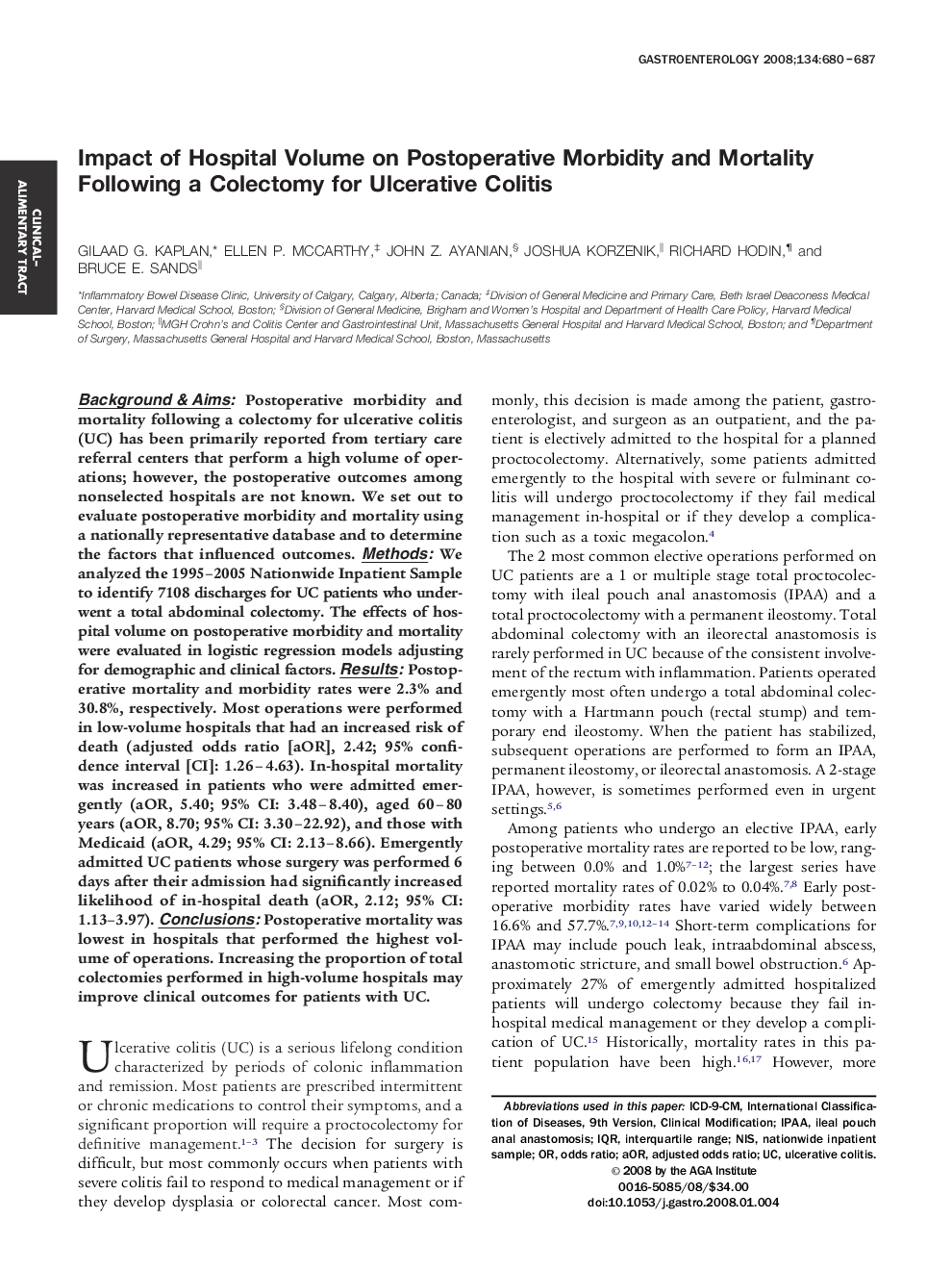| Article ID | Journal | Published Year | Pages | File Type |
|---|---|---|---|---|
| 3296372 | Gastroenterology | 2008 | 9 Pages |
Abstract
Background & Aims: Postoperative morbidity and mortality following a colectomy for ulcerative colitis (UC) has been primarily reported from tertiary care referral centers that perform a high volume of operations; however, the postoperative outcomes among nonselected hospitals are not known. We set out to evaluate postoperative morbidity and mortality using a nationally representative database and to determine the factors that influenced outcomes. Methods: We analyzed the 1995-2005 Nationwide Inpatient Sample to identify 7108 discharges for UC patients who underwent a total abdominal colectomy. The effects of hospital volume on postoperative morbidity and mortality were evaluated in logistic regression models adjusting for demographic and clinical factors. Results: Postoperative mortality and morbidity rates were 2.3% and 30.8%, respectively. Most operations were performed in low-volume hospitals that had an increased risk of death (adjusted odds ratio [aOR], 2.42; 95% confidence interval [CI]: 1.26-4.63). In-hospital mortality was increased in patients who were admitted emergently (aOR, 5.40; 95% CI: 3.48-8.40), aged 60-80 years (aOR, 8.70; 95% CI: 3.30-22.92), and those with Medicaid (aOR, 4.29; 95% CI: 2.13-8.66). Emergently admitted UC patients whose surgery was performed 6 days after their admission had significantly increased likelihood of in-hospital death (aOR, 2.12; 95% CI: 1.13-3.97). Conclusions: Postoperative mortality was lowest in hospitals that performed the highest volume of operations. Increasing the proportion of total colectomies performed in high-volume hospitals may improve clinical outcomes for patients with UC.
Keywords
Related Topics
Health Sciences
Medicine and Dentistry
Gastroenterology
Authors
Gilaad G. Kaplan, Ellen P. McCarthy, John Z. Ayanian, Joshua Korzenik, Richard Hodin, Bruce E. Sands,
